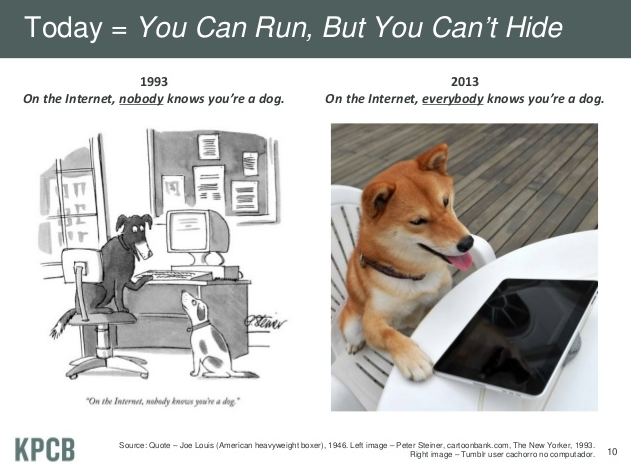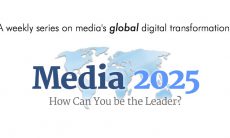In many discussions about driving adoption for social business platforms, the acronym WIIFM (“What’s in it for me”) became a well known jargon to say: unless users take personal advantage from the social platform, they won’t use it at all. A simple Google search for that term reveals 155,000 results, while its less known, more altruistic sibling, WIIFU (“What’s in it for us”), returns a meager 4,980 results as of this writing. WIIFM is so widely used that it became more of a dogma than an argument. But how much of it is actually true? Or better yet, is that an actual make-or-break factor that must drive all your efforts in deploying a social platform? If you dig deep, you may find that, while personal benefits are important for many users, they are far from being a universal answer for driving broad adoption.
Adam Smith’s “invisible hand” – the claim that “individuals’ efforts to maximize their own gains in a free market benefits society, even if the ambitious have no benevolent intentions” – has often been used to justify all kinds of selfish acts by individuals and corporations. It’s actually a very elegantly constructed argument, and at the time it was initially stated in the 18th century, it was probably as hard to refute it as it was to defend it. Almost a 100 years later, Darwin published his famous theory, arguing that nature’s evolution simply followed a very similar principle: natural selection via the survival of the fittest. If that was the way of the natural world, nothing more reasonable than applying the same principle to the way we do business. Following suit, many of us tend to associate work life and career paths at large organizations with the proverbial corporate greed stereotype: cut-throat pursuit of personal gain with a complete disregard for others, for the environment, and for future generations.

However, if you work in a large corporation, you may have noticed that, while they all have their fair share of ruthless individuals who will do anything to get to the top, the vast majority of your colleagues are actually not only polite, but caring, warmhearted and generous people. This apparent paradox may lead one to believe that their immediate, “real life” network at the office is just an island of niceness surrounded by corporate jerks. While that is in fact a possibility, a more plausible explanation is the simplest one: nice people outnumber not-so-nice people many times to one in most, if not all, realms of life.
One of the side benefits of having an enterprise social networking platform at the workplace is that, by digitizing conversations and activities, and by bridging hundreds of small, disjointed networks of people into a single online community, the natural attributes of that newly formed “corporate commons” are manifested more conspicuously. As the online social platform enables each person in the organization to connect well beyond their “real life” network (150 people or so, if you believe in Dunbar’s number), the realization that they are a part of a much larger group will create a feedback mechanism into their individual behavior, and a shift from the selfish WIIFM model towards a more socially acceptable WIIFU approach may occur. If the majority of individuals are nice and willing to help others, their collective online presence will reflect that.
Think about those two theories mentioned above. The very existence of government and regulations suggests that there’s more to free markets than simply letting individual interests dictate the market equilibrium. In the case of evolutionary theory, it’s a big mistake to assume that “survival of the fittest” is the same as “only the best will prevail.” The first four editions of “On the Origin of Species” did not even mention that expression – which was actually coined by philosopher Herbert Spencer. It’s meant to say that the organism better adapted to the surrounding environment has a better chance to survive compared to its peers. That’s a subtle, but important distinction. It’s not the strongest, not the fiercest, not the smartest, not the cutest. It’s the most adapted.
A hot topic in evolutionary theory is that of altruism among organisms. If all that matters for the perpetuation of a species is their equivalent of the WIIFM behavior for each individual, how can you possibly explain wild buffaloes rescuing members of their herd captured by predators, or birds who support the feeding of non-related offspring? These are not examples that invalidate Darwin’s theory, they just show how much more complex the process of natural selection and evolution is. In the cases mentioned above, kin relationship may satisfactorily explain the unexpected behavior – by protecting those “like you”, you are ultimately protecting your own species – but more complex theories are needed to explain why some dogs, monkeys and lions adopt orphaned cubs from other species or why some species of dolphins support sick or injured animals.
The issue here is not that having an answer for WIIFM is not important. It is. But don’t get obsessed by it. You don’t need the perfect answer for that question to be successful in your social business endeavors. Plenty of people in your organization will use the social platform for reasons that cannot be easily linked to a personal gain. Some will use it because it’s cool. Some will use it because their friends are using it. Some will never know why they are using it, but they will do it anyway. And many will use it simply because they think it is ultimately better for everybody if they do so.
The latest “Internet Trends” report by Mary Meeker has this very interesting and provocative slide (thanks to Bernie Michalik for the tip):
 I don’t think it actually works that way over the Internet: our “edited online selves” tend to be taller, younger and more successful than our real selves, as most people only put their best face out on Facebook, Twitter and other social media channels. But inside a corporate network, that’s much closer to the truth. There, many people will know if you are a dog. Or a lion. Or a fly on the wall.
I don’t think it actually works that way over the Internet: our “edited online selves” tend to be taller, younger and more successful than our real selves, as most people only put their best face out on Facebook, Twitter and other social media channels. But inside a corporate network, that’s much closer to the truth. There, many people will know if you are a dog. Or a lion. Or a fly on the wall.
In a world dominated by telephone, email, siloed file repositories and old-fashioned Intranets, most communications happen top-down, or within limited peer-to-peer or small group exchanges. That’s where selfish or disengaged behavior finds fertile ground and may be rewarded handsomely, as you can easily be a jerk or a dummy when nobody is looking at you. Once you introduce a platform that allows bottom-up and sideways conversations that are more transparent, real-time and broad in nature, the “most adapted” individual may be the one who is actually the nicest person in the big room, the one who speaks up, shares his knowledge, helps others, demonstrates leadership. That’s when “the survival of the fittest” and “the survival of the nicest” may become one and the same, and your whole organization will benefit from that.





